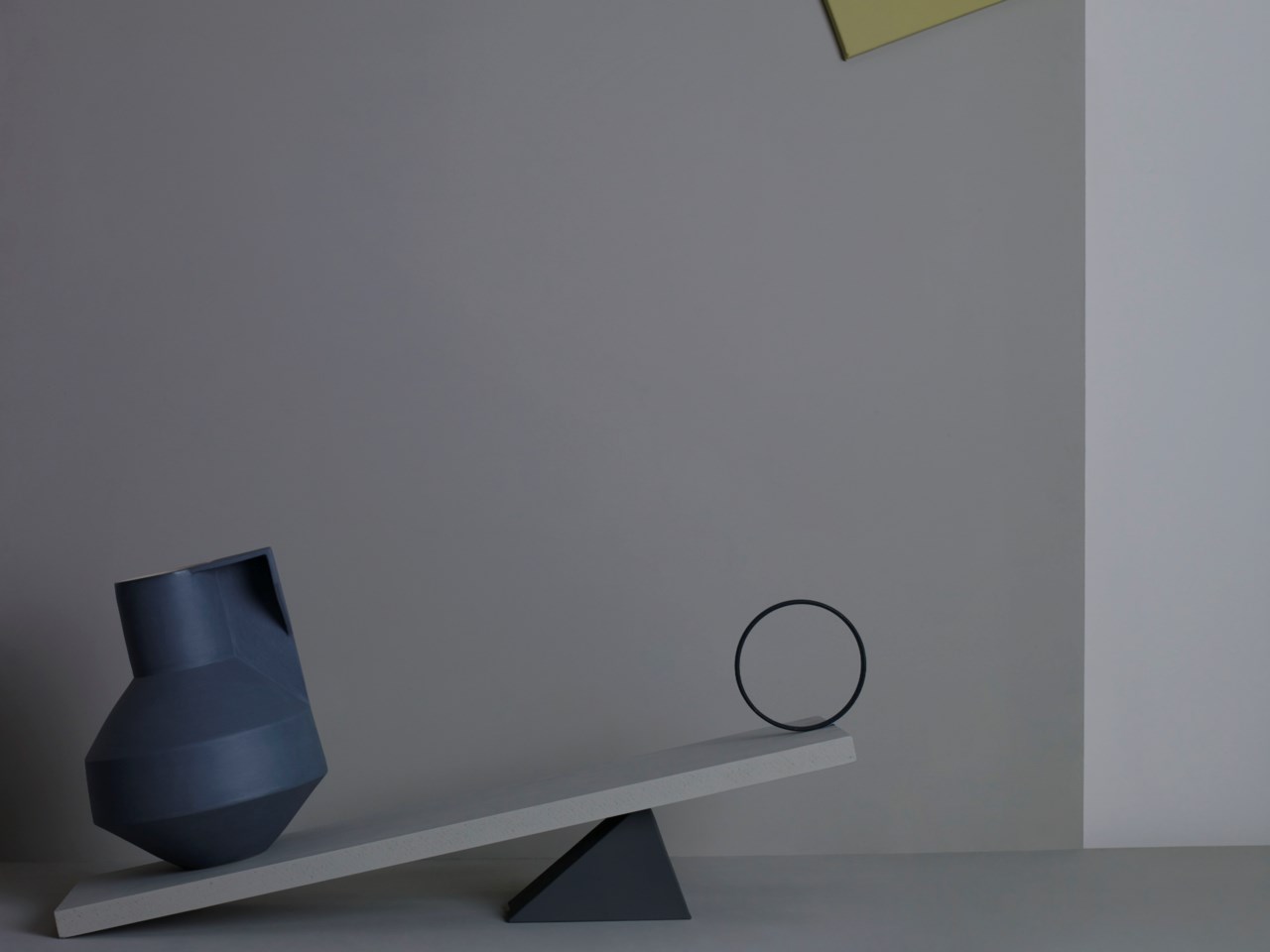My wife, who hails from Belfast, introduced me to the work of Northern Irish ceramicist Derek Wilson about five years or so ago having experienced it at a group show during the London Design Festival. I have subsequently become a huge fan. His combination of architectural shapes and soft European colours are a surprisingly successful match that allows his work to sit somewhere between sculpture and decorative object. With a recent solo show The Constructed Vessel, at Flow Gallery in London’s Nottinghill Gate and his inclusion in Tom Morris’ New Wave Clay book published by Thames & Hudson, Derek Wilson has gone from underground Irish craft practitioner to a rising star of international ceramics.
“My practice as a ceramicist centres on the making of a diverse range of contemporary objects-from the functional to the sculptural. I always start with the same process, the potter’s wheel being my predominant tool, but my work is never static or fixed and in some ways reflects the multifarious identities of contemporary ceramics- a twenty-first century hybridization of studio potter and conceptual artist.”
Derek Wilson
Working out of his studio within a beautifully utilitarian former linen mill in East Belfast on the Newtownards Road, Wilson creates a wide variety of ceramic vessels in porcelain and stoneware - practical glazed cups and bowls thrown on the wheel, along with more sculptural pieces assembled from a combination of wheel thrown and built sections.
Wilson uses porcelain for the tableware, drawn to its inherent qualities of whiteness, strength, and translucence but also for the depth achievable when it is glazed. Stoneware with engobe surfaces is his preferred material for his sculptural pieces however, with the matt surfaces delicately softening the more rigid shapes. Wilson also enjoys the contrast these two materials provide.
Derek Wilson Ceramics was established in 2007 after Wilson graduated with an MA in Fine & Applied Arts from Ulster University. He had previously studied ceramics at the Crafts Council of Ireland, Kilkenny and the Bournemouth and Poole College of Art and Design.
For the 2018 solo exhibition at Flow Gallery called The Constructed Vessel, the artist worked with stylist Sania Pell to display the objects in a way that highlighted the importance not only of the colour of the objects themselves but also of the subtle nuances of colour brought about by the introduction of light and shadow. Flow Gallery summed up the exhibition in this way; “For this exhibition Wilson has produced a collection of sculptural objects that have stemmed from his continuous exploration of the altered vessel. Questioning functionality, he uses the vessel as a means of artistic expression by exploring free and geometric abstraction. Habitually, the importance of object placement is foremost with Wilson’s work and a further dimensionality lies within how it is viewed. Inviting movement in the observer, these works ask them to contemplate the significance of subtle tonalities in surface finish and distribution of light and shadow.
Wilson cites an interest in architecture and the buildings that surround him in Belfast as a contributing factor to his constructed form, along side an influence from mid-century British constructivism. It’s interesting to look at Wilson’s work for The Constructed Vessel show in the context of Milanese artist Natalie du Pasquier who was a founding member of the Memphis movement. There is something strangely connected about the way the two artists’ playful positioning of objects and sublime use of colour contribute to a highly dynamic yet ultimately calm still-life. You can watch a short film on the art of Nathalie Du Pasquier here.
“I work with a small selection of galleries and stores. All of the places vary and offer different values and experiences, some stock purely ceramics, some specialise in applied arts and others offer design or clothing. I am selective about what stores I work with, yet they all have different values and qualities that I respect and admire. My studio is a way to have a physical shop at times. It offers an insight and an understanding of how the work is produced, and people are always intrigued to see the place where something has been made. I think this valuable and it elevates it from being just a retail space. In the future I would like to have a studio with an allocated retail gallery space in front.”
Derek Wilson
In an effort to cater for his growing global audience Wilson recently launched an online shop to provide people outside the UK with the opportunity to purchase his work. Unlike many artists, Wilson encourages visitors to his studio to discover the background to the making of his ceramics first hand and to show the important role placement plays in his work.
Not all of Wilson’s work is so focused on abstracted forms, architectural inspiration and the manipulation of light. A large part of Wilson’s practice revolves around the throwing of simple daily use objects like beakers, cups, bowls teapots and jugs but all exhibit a sophisticated use of colour and a refined shape. His gloss glazed work tends to be more fluid in form, with soft round lips and bases - in stark contrast to the matt glazes found on his more geometric constructed vessels.
To get a better understanding of the work of Derek Wilson it is worth taking a look at this short film on Vimeo
For more information on the artist go to https://derekwilsonceramics.com/
Should you be in Northern Ireland, Derek Wilson’s studio is situated at Unit B4 Portview, 310 Newtownards Road, Belfast.
If you find yourself drawn to contemporary ceramics and would like to learn more about some of its key practitioners you should definitely purchase a copy of both of these wonderful books: New Wave Clay by Tom Morris (published by FRAME) and Clay - Contemporary Ceramic Artisans by Amber Creswell Bell (published by Thames & Hudson)














